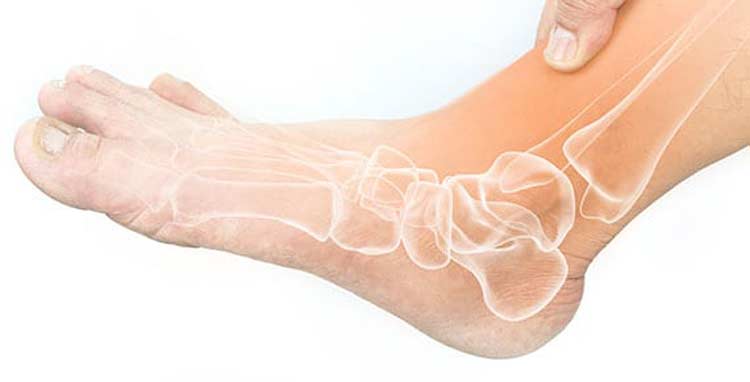
Discover how we can help you find relief from tendonitis.
Tendonitis refers to any irritation or inflammation of thick tissues called tendons that attach bones to muscles. The condition can be caused by a sudden injury or by repetitive motions that place added stress on tendons and supporting structures. While tendons in any part of the body may become inflamed and irritated, tendonitis is a common source of foot and ankle pain. More common in adults and athletically active individuals, tendonitis can affect anyone. Seek medical care if:
- Symptoms are severe and self-care is not helping
- You cannot move or place weight on the affected foot
Causes
Overuse is the most common reason for tendonitis. Overuse injuries to tendons can occur from any movements that consistently stress or stretch tendons beyond a normal range of motion. Such actions may also cause tendons to become torn. Tendonitis is sometimes caused by improper posture while standing or stress from as rheumatoid arthritis, spondyloarthropathy, and other chronic conditions that contribute to tissue inflammation. Foot or ankle injuries could cause tendonitis to develop. Individuals with flat feet may also develop the condition if the lack of arch support places added stress on tendons. Muscular imbalances can also be created with high arches. In rare instances, an infection may eventually lead to tendonitis.


Signs and Symptoms
The most obvious sign of tendonitis is pain felt directly around the affected area. If the cause is a sudden injury, pain may be felt immediately. When the condition is due to stress on a tendon, symptoms may become increasingly noticeable over time. The following symptoms are typically associated with tendonitis:
- Visible swelling
- Tenderness in the affected area
- Discomfort triggered by foot and ankle movements
- Stiffness around the affected ankle or foot
What Are the Different Types of Tendonitis?
Achilles tendinitis causes pain the back of the ankle. Usually associated with flat feet, posterior tibial tendonitis affects the inside part of the ankle. If symptoms are felt on the outside of the ankle, it may be due to peroneal tendonitis. Flexor tendonitis often results in pain felt deep inside of the back of the ankle. If the top of the foot is affected, it may be a sign of extensor tendonitis.
If the inflammation is mild, the first treatment often recommended is the RICE method. This means resting the affected area, applying ice for 15-20 minutes at a time for the first few days, applying some type of compression to the area, and elevating the affected foot to increase circulation. Modifying activities and over-the-counter anti-inflammatory medications may also ease discomfort and reduce swelling.
How Is Tendonitis Diagnosed?
If self-care methods aren’t effective after a few days or the resulting pain is severe and getting worse, it’s time to seek medical attention. The first step taken will be to make an official diagnosis of tendonitis. This is usually done by ruling out other possible foot problems, including fractures and damage to muscles and ligaments. Diagnosis typically involves a thorough examination of the affected are. Image tests may be done to determine the extent of damage to the tendon and whether or not there is joint damage.
Podiatry Treatments
Treatment may involve the use of a brace or other forms of immobilization to limit movement until the tendon heals. Prescription and topical anti-inflammatory medications sometimes ease tissue swelling enough to allow patients to benefit from various forms of physical therapy. PT can be either therapeutic in nature or involve range of motion exercises and gentle stretching. Additional treatment options may include:
- Corticosteroid injections directly into the affected area
- TENS units and other forms of electrotherapy
- Friction massage therapy
When Is Surgery Recommended?
Surgery for tendonitis is rarely necessary. It’s an option that’s only considered if other treatments aren’t successful or if there is structural damage to the tendon itself or nearby structures in the foot and/or ankle.
Reduce your risk of developing tendonitis in your feet and ankles by properly stretching first before participating in activities that will involve foot movements. Making an effort to minimize repetitious foot movements, being mindful of proper form while running or jogging, and avoiding processed and fried foods, sugary snacks, and other foods that tend to contribute to inflammation can also keep tendons healthy. It’s just as important to know when to pay attention to pain and take a break from activities that seem to trigger your discomfort.

